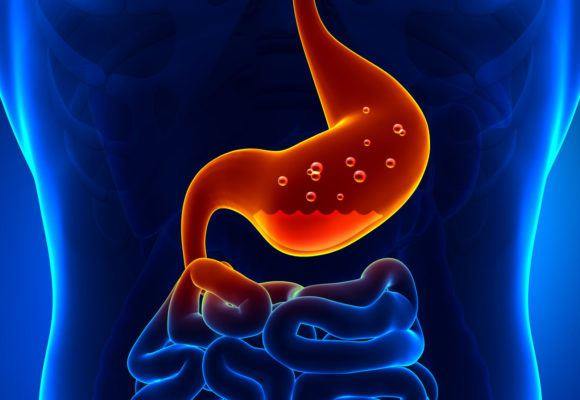Is your stomach producing enough acid?
When we are young and healthy, our stomach can produce almost two liters of hydrochloric acid per day. We need that acid to properly digest the food we eat, and to absorb the nutrition after the food is digested. This acid is mostly neutralized in the small intestine by the alkaline secretions from the pancreas.
As we age, this secretion of acid tends to decrease.
Well, we have discovered a clever and inexpensive way to figure out if you are making enough stomach acid as you age.
This information can be important to your health. If you are not making enough stomach acid, there are safe and inexpensive supplements you can take with meals to improve your digestion, and make more of the nutrition you eat available for you to absorb. And knowing that you have too little acid production can keep you from falling into a trap where you agree to take drugs to decrease your stomach acid, when that may not be your real problem.
One of the most common problems people young and old have is indigestion and gastric reflux, or GERD (gastro-esophageal reflux disorder). Drugs given to decrease the production of stomach acid and decrease the symptoms of indigestion and GERD are the most common drugs prescribed by doctors.
But this approach may not be appropriate for everyone. The long term use of acid lowering drugs has some undesirable complications. Sometimes, if your acid production is too low, taking a substance like betaken hydrochloride to supplement the acid you are missing may actually improve your symptoms of indigestion or GERD.
There is no need to guess. Below I would like to offer some simple steps on how to check this yourself.
How to calculate your acid production:
- You will need some pH papers that can measure the pH of your saliva with some precision. Please use the brand we recommend. Find them HERE.
- Measure the pH of your saliva before a meal. Just spit on a piece of the pH paper.
- Eat the meal.
- At the end of the meal, rinse your mouth with some water so there is no residue of food or drink, wait a 5 minutes, then measure the pH of your saliva again.
If the pH of your saliva is measurably higher after eating, then you are making a decent amount of stomach acid. You will need to consult with your clinician about whether you are making enough acid, as this is determined by your history and clinical findings in addition to the results of this test.
What are you measuring?
There are certain things that are always kept in balance by the body. When the body is making liters of acid that are excreted into the stomach, there is an equal amount of sodium bicarbonate (a base) that is produced. The body is taking neutral fluids and creating an equal amount of an acid and a base. The acid is secreted into the stomach, and the sodium bicarbonate (base) is secreted into the blood. For a short time after you eat, as the body is busy making the acid needed to help with the digestion of your food, your blood and body tissues become temporarily more alkaline. The pH of the saliva changes with the pH of the blood, and is an accurate indicator of the pH of your body’s blood and tissue.
If your stomach is making acid, you will see the pH of your saliva increase over what it was before you started your meal. The greater the increase, the more acid your stomach is producing.
Are there natural things you can do to help your stomach produce more acid? Yes, and there are supplements you can take with meals that can help. But I will save that discussion for a future article. For now this can be a way to check if things are off balance so you can change them before taking medications. The more simple tools you have on hand for your wellness the better.
To your health.

